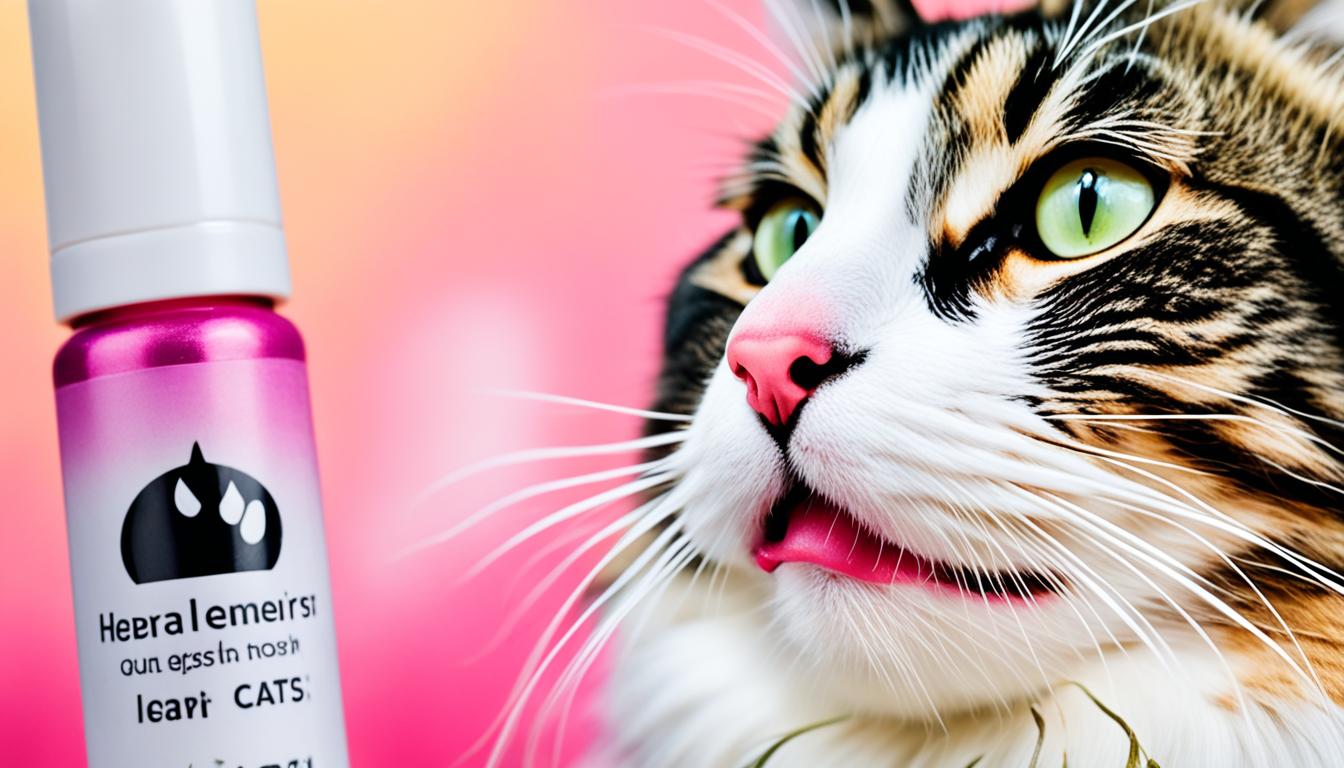Did you know a cat’s nose **can change color**? It’s true! Just like their **fur and paw pads**, a cat’s nose can shift colors over time. Some changes are harmless and temporary, but others might hint at health problems. **Explore** why a cat’s nose changes color and what it could mean for their health.
- Temperature changes
- Mood changes
- Lack of oxygen
- Anemia
- Dehydration
- Diabetes
- Feline leukemia virus
- Hypothermia
- Frostbite
- Skin cancer
If you’ve noticed your cat’s nose turning black or any other unusual color, it’s essential to consult with a veterinarian. They can determine the cause of the color change and provide appropriate treatment if necessary. Let’s dive deeper into the fascinating world of cat nose color changes and what they might mean for your furry friend’s health.
Key Takeaways:
- A cat’s nose can change color due to various factors, including temperature, mood, and underlying health issues.
- Persistent or significant color changes in a cat’s nose should be evaluated by a veterinarian to rule out any potential health concerns.
- Maintaining a balanced diet, ensuring proper hydration, and regular veterinary check-ups can help keep your cat’s nose and overall health in good condition.
- Monitor your cat’s nose for any unusual color changes and seek professional advice if needed to ensure their well-being.
Why Does a Cat’s Nose Change Color?
The color of a cat’s nose can change due to various factors. Temperature changes, mood changes, lack of oxygen, anemia, dehydration, diabetes, feline leukemia virus, hypothermia, frostbite, and even skin cancer can all contribute to changes in a cat’s nose color.
Temperature changes: When the temperature drops, a cat’s nose may appear paler due to vasoconstriction, where blood vessels in the nose constrict to conserve heat. Conversely, in warmer temperatures, it may appear darker as the blood vessels dilate to release heat.
Mood changes: Cats are known for their emotional sensitivity, and intense emotions such as excitement, playfulness, or anger can cause the blood vessels in the nose to dilate, leading to a darker or pinker nose.
Lack of oxygen: A blue nose in cats can indicate a lack of oxygen, which is a medical emergency. If you notice this change, it is crucial to seek immediate veterinary attention.
Health issues: Various health conditions can affect a cat’s nose color. Anemia, which is characterized by a deficiency of red blood cells, can cause the nose to look pale. Dehydration, diabetes, feline leukemia virus, hypothermia, frostbite, and skin cancer can also result in changes in a cat’s nose color.
To provide a visual representation of the potential factors influencing nose color changes in cats, the table below summarizes the various causes:
| Cause | Effect on Nose Color |
|---|---|
| Temperature changes | Paler or darker nose depending on weather conditions |
| Mood changes | Darker or pinker nose due to dilated blood vessels |
| Lack of oxygen | Blue nose, indicating a medical emergency |
| Anemia | Pale nose |
| Dehydration | Pale nose |
| Diabetes | Changes in nose color |
| Feline leukemia virus | Changes in nose color |
| Hypothermia | Changes in nose color |
| Frostbite | Changes in nose color |
| Skin cancer | Changes in nose color |
Keep in mind that if you notice any changes in your cat’s nose color or have concerns about their health, it is always best to consult with a veterinarian. They can provide a proper diagnosis and recommend appropriate treatment if necessary.
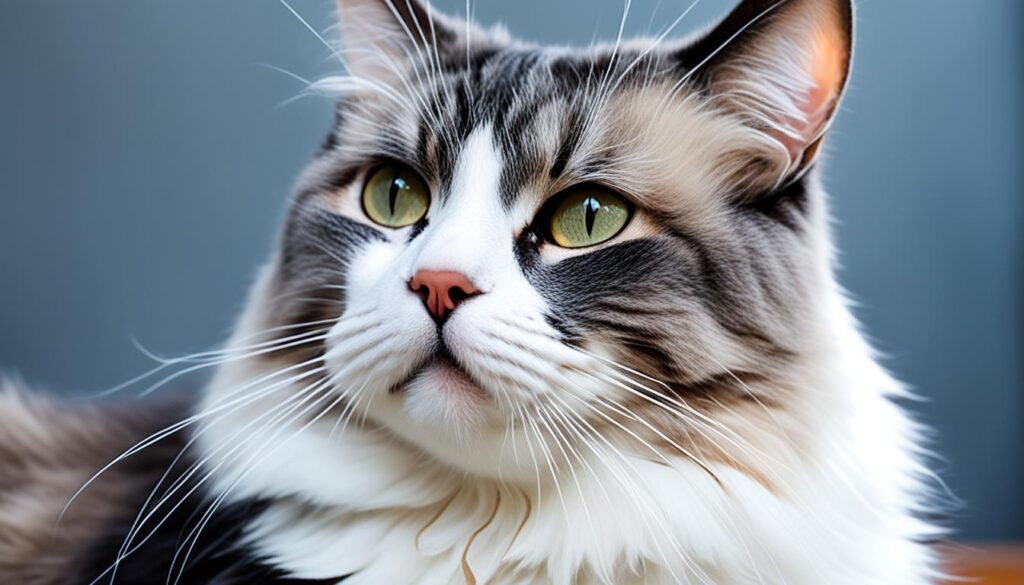
Nose Color Changes and Health Concerns
Changes in nose color can sometimes be an indication of underlying health concerns in cats. A pale or white nose can be a sign of anemia in cats, which is a condition where there isn’t enough red blood circulating in the cat’s bloodstream. Dehydration in cats can also cause their nose to appear pale. Other potential health issues that can lead to changes in a cat’s nose color include diabetes, feline leukemia virus, and even skin cancer in cats.
It is important to monitor your cat’s nose and seek veterinary advice if you notice any unusual or persistent changes. Anemia in cats can disrupt their overall well-being and require appropriate treatment. Similarly, dehydration in cats can lead to serious health consequences if not addressed promptly. Detecting and managing conditions such as diabetes, feline leukemia virus, and skin cancer in cats at an early stage can significantly improve their prognosis and quality of life.
Regular check-ups with your veterinarian are crucial to ensure your cat’s health and detect any potential health concerns. Your veterinarian can perform a comprehensive examination, conduct diagnostic tests, and provide appropriate treatment if necessary. Prompt intervention and ongoing veterinary care can help address nose color changes in cats and maintain their overall health and well-being.
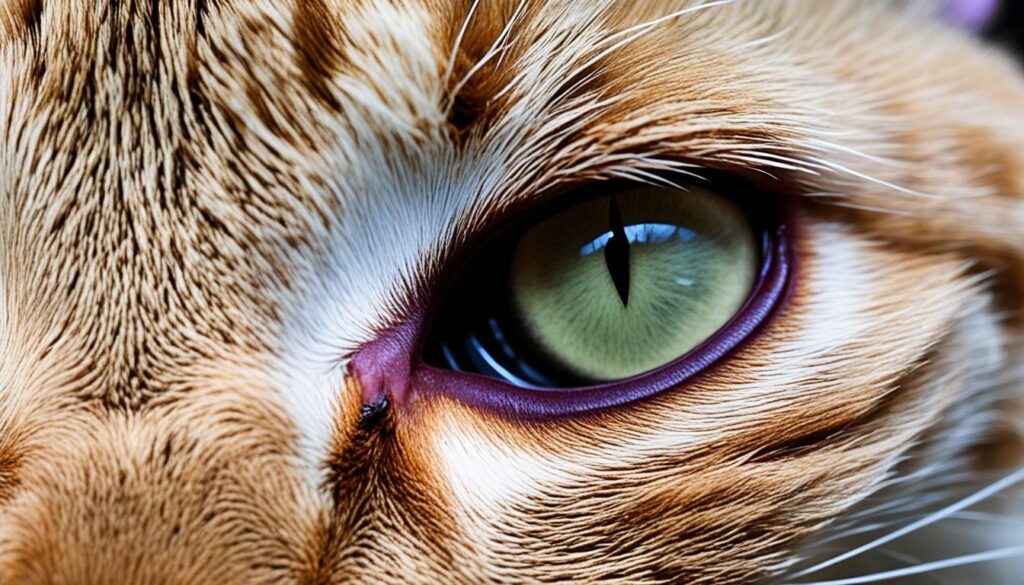
Regular veterinary care and vigilance are key to managing changes in nose color and maintaining your cat’s health. By staying informed and proactive, you can ensure that your furry friend receives the necessary care and attention, promoting their well-being and happiness.
When to Be Concerned About Cat Nose Color Changes
Brief changes in nose color followed by a return to normal are usually not a cause for concern. However, if you notice regular or prolonged color changes in your cat’s nose, it may be a sign of a serious health problem. In such cases, it is advisable to seek veterinary advice. A veterinarian will be able to examine your cat and conduct any necessary tests to determine the cause of the nose color changes and provide appropriate treatment if needed.
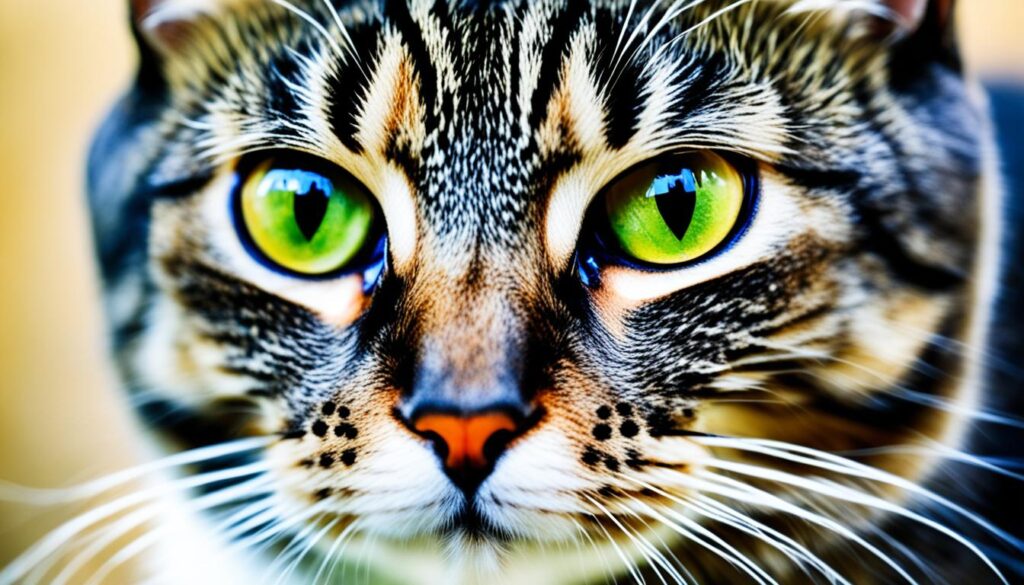
If you observe persistent nose color changes in your cat, it is important to address the issue promptly. Although some changes may be temporary, they can also indicate an underlying health condition that requires attention. By consulting a veterinarian, you can ensure proper diagnosis and appropriate care for your cat.
Veterinary advice for nose color changes in cats is essential to determine the cause and course of action. During the examination, the veterinarian will carefully assess your cat’s overall health and consider potential factors contributing to the nose color changes. This may involve blood tests, skin biopsies, or other diagnostic procedures, depending on the specific situation.
“Prompt veterinary intervention is crucial when it comes to persistent changes in your cat’s nose color,” says Dr. Sarah Thompson, a renowned veterinarian specializing in feline health. “Determining the underlying cause is key to developing an effective treatment plan and ensuring the best possible outcome for your furry friend.”
Common reasons for persistent nose color changes in cats:
- Allergies or skin irritation
- Sun damage or skin cancer
- Anemia or other blood disorders
- Feline viral infections
- Hormonal imbalances
| Concern | Veterinary Advice |
|---|---|
| Allergies or skin irritation | A veterinarian can determine the cause of the allergies or irritation and recommend appropriate treatment, such as medication or dietary changes. |
| Sun damage or skin cancer | If sun damage or skin cancer is suspected, the veterinarian may suggest measures to protect your cat from UV rays, such as limiting outdoor exposure or using pet-safe sunscreen. In cases of skin cancer, further investigations, such as biopsies or imaging, may be necessary. |
| Anemia or other blood disorders | If anemia or blood disorders are the potential causes, the veterinarian may conduct blood tests to evaluate your cat’s red blood cell count and other related parameters. Treatment options may include blood transfusions, medication, or dietary adjustments. |
| Feline viral infections | For feline viral infections, additional tests may be needed to identify the specific virus and determine the appropriate treatment. The veterinarian may recommend vaccinations or antiviral medications to manage the infection. |
| Hormonal imbalances | In cases of hormonal imbalances, the veterinarian will evaluate your cat’s overall hormonal profile and recommend appropriate treatments, such as hormone replacement therapy or adjustments in medication or diet. |
Remember, a vigilant owner plays a crucial role in detecting and addressing persistent nose color changes in cats. By seeking veterinary advice and appropriate care, you can help your feline companion maintain optimal health and well-being.
Keeping Your Cat’s Nose Healthy
Proper care and attention are essential for maintaining your cat’s nose health and preventing color changes. Here are some tips to ensure your furry friend’s nose stays healthy:
- Provide a Balanced Diet: Feeding your cat a nutritious diet is crucial for overall health, including the nose. Make sure to offer high-quality cat food that meets their specific nutritional needs. A well-balanced diet will support their immune system, keeping their nose healthy and vibrant.
- Ensure Proper Hydration: Cats need to stay hydrated to maintain optimal health. Supply fresh water at all times and consider incorporating wet food into their diet. Adequate hydration helps prevent dehydration, which can lead to dry and pale noses.
- Protect from Extreme Temperatures: Extreme temperatures can have a negative impact on your cat’s nose. During cold weather, ensure they have a warm and cozy space to stay in. In hotter climates, provide shade and a cool environment to prevent overheating and potential damage to their nose.
- Regular Veterinary Check-ups: Keeping your cat’s nose health in check requires regular veterinary visits. Schedule routine check-ups to monitor their overall well-being, including their nose. Your veterinarian can detect any early signs of health problems and provide appropriate treatment.
- Limit Sun Exposure: Prolonged exposure to the sun can cause skin damage, including potential nose color changes. If your cat enjoys spending time outside, ensure they have access to shaded areas or provide a cat-friendly sunscreen. This preventive measure can help reduce the risk of skin cancer and keep their nose healthy.
By following these guidelines and staying proactive in maintaining your cat’s nose health, you can prevent color changes and ensure your furry friend’s overall well-being. Remember, regular veterinary check-ups are key to addressing any potential issues and providing the necessary care for a healthy nose.
Comparison of Different Cat Nose Health Maintenance Tips
| Factors | Maintenance Tips |
|---|---|
| Diet | Provide a balanced diet with high-quality cat food |
| Hydration | Ensure access to fresh water and incorporate wet food |
| Temperature | Protect from extreme cold and heat |
| Veterinary Check-ups | Schedule regular check-ups for overall health monitoring |
| Sun Exposure | Limit exposure to prevent skin damage |
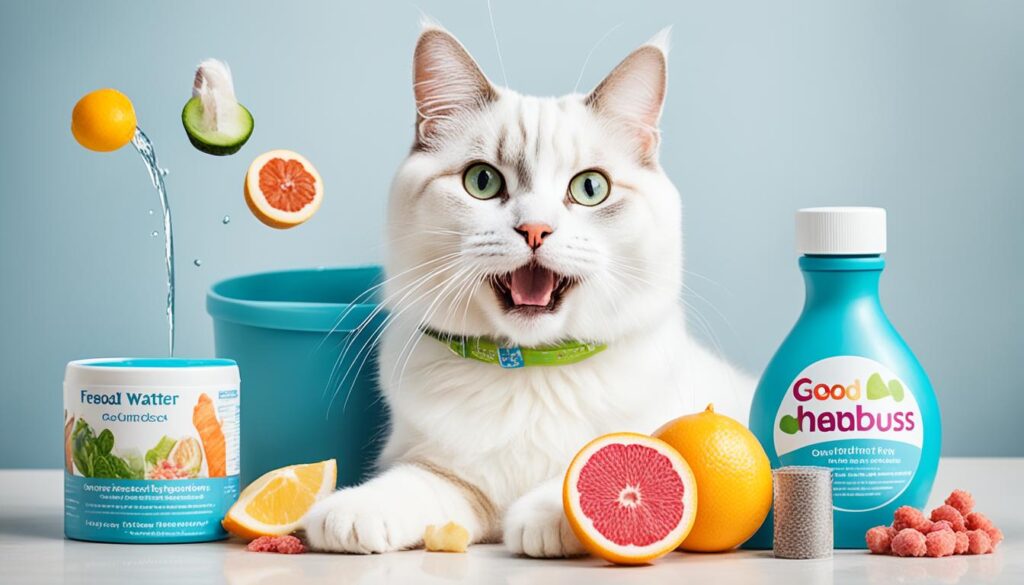
Conclusion
The color changes in a cat’s nose can be caused by various factors, including temperature, mood, health issues, and even skin cancer. While some changes may be normal and temporary, persistent or significant color changes should be evaluated by a veterinarian to rule out any underlying health concerns. Regular veterinary check-ups, maintaining a balanced diet, and providing appropriate care can help keep your cat’s nose and overall health in good condition. Be attentive to any changes in your cat’s nose color and seek professional advice when necessary.
FAQ
Why does a cat’s nose change color?
What health concerns can cause changes in a cat’s nose color?
When should I be concerned about cat nose color changes?
How can I keep my cat’s nose healthy?
Why is it important to monitor my cat’s nose color?
Could Stress or Illness Cause My Cat’s Nose to Turn Black?
There is no known scientific connection between stress, illness, and a cat’s nose turning black. This phenomenon could be due to the genetic origin of cloud nine idiom or an unrelated issue. If you notice any changes in your cat’s health, it’s best to consult a veterinarian for proper diagnosis and treatment.

